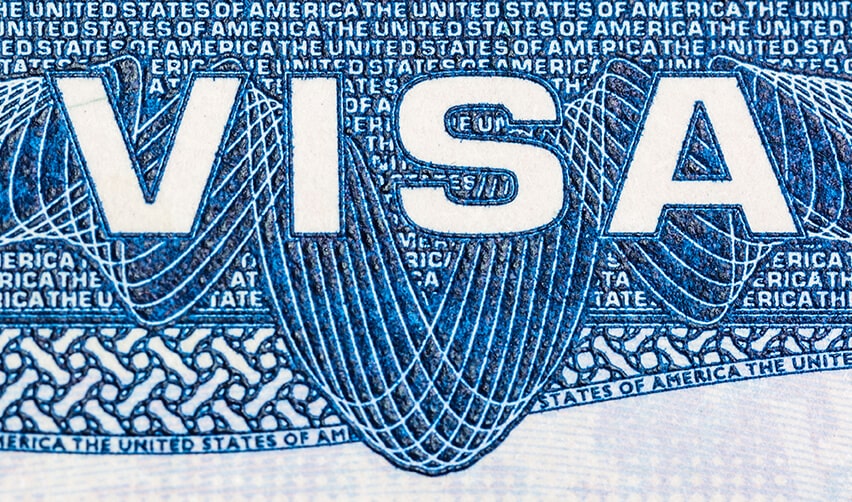Although each of the two journeys carries its own sets of pros and cons, all paths lead to a life in the United States – a highly sought after future among foreign nationals. Gaining residency in the country boasting the world’s largest economy can happen through a variety of pathways, especially for foreign investors and entrepreneurs. Two of the most popular U.S. immigration options among them are the E-2 visa program and the EB-5 Immigrant Investor Program. While prospective immigrants often consider each of them and choose based on their individual circumstances, one emerging strategy is to participate in both.
In a collaborative effort with Beshara Global Migration Law Firm, EB5AN presented a webinar on how to take advantage of these programs. This educational seminar addresses making the switch between these two visas and shares how program participants may make an EB5 investment in installments. Watch the webinar on YouTube, download the PDF slides of the presentation, or read on to learn more about this new and effective immigration strategy.
Initially Operating a U.S. Business Under an E-2 Visa
Entrepreneurs who come from specific treaty countries and are seeking to operate a business in the United States temporarily are eligible to apply for the E-2 visa program. Visas under the program are initially valid for two years and may be renewed indefinitely. Spouses and dependent children of the participating entrepreneur are eligible to participate as well. Under this program, spouses may apply for work permits, but children cannot. Children may, however, may apply for college and may even qualify for better chances in admissions and in-state tuition savings.
Although the general recommended investment amount is often cited as $200,000+, the E-2 program does not require any specific minimum investment amount. What is required is that the investor hold a minimum 50% stake in the business. They have the option of acquiring an existing business or launching a brand new one themselves, but in either case, they must own at least half of the business entity to qualify for an E-2 visa. In an effort to mitigate the risk of taking on ownership, when an investor’s primary goal for buying the business is an opportunity for U.S. residency, the terms are sometimes set up such that the acquisition is conditioned on E-2 visa approval.
The most significant obstacle among prospective investors considering this two-part strategy is meeting the nationality restriction. Remember, this program is reserved for entrepreneurs from treaty countries. China, India, and Vietnam—the top three countries in terms of EB-5 demand—are not included in this list. There are, however, 81 participating countries around the globe, and the work around for citizens outside of E-2 countries is to consider the possibility of alternate citizenship in a treaty country. Granada, for instance, offers speedy citizenship-by-investment programs.
Understanding the EB-5 Investment Visa Program
The EB-5 Immigrant Investor Program requires a significantly higher investment in the United States. Essentially, the program grants eligible investors permanent residency in the United States after they inject $1.8 million into a qualifying EB-5 project and see the EB5 investment through to meeting all program requirements. Note that the minimum required investment drops to $900,000 when a program-approved project is located in a targeted employment area (TEA).
Participation in the EB-5 investment program also requires an investor to provide the necessary evidence to United States Citizenship and Immigration Services (USCIS) to prove all their EB5 investment capital was derived from lawful sources. An investor’s new commercial enterprises (NCEs) may be their own business or a third-party entity. The initial granting of permanent resident status in the United States is conditional, and upon proving that their EB5 investment ultimately funded at least 10 new full-time positions for U.S. workers after a two-year investment period, those conditions may be lifted.
As with the E-2 program, permanent residency status may also be available to EB-5 investors’ spouses and qualifying children. Once the investment process is complete and all program requirements have been met, the EB-5 visa offers investors the right to remain in the United States indefinitely and ultimately poses no restrictions on working, studying, and traveling anywhere in the country. As long as the funds have been lawfully sourced, remain at risk for the duration of the investment, and create the required 10 jobs, the investor and their family are eligible for EB-5 visas.
An Effective Immigration Strategy: Converting an E-2 to an EB-5 Visa
Some foreign nationals have found the most effective option is to combine these two immigration programs. A key advantage to doing this is that the E-2 visa program has, hands-down, the fastest processing times. E-2 petitions are typically adjudicated within 12 weeks. EB-5 average processing times, on the other hand, run about two years (even longer for backlogged countries). Participating in the E-2 program provides investors with initial access to the United States much faster.
Step 1: Obtain an E-2 Visa
For those residing in any of the 81 treaty countries, the process of obtaining an E-2 visa can be completed in three months. Investors who reside outside of these locations will have to spend a bit more time acquiring new citizenship status in one of these treaty countries first.
Step 2: Meet EB-5 Investment Requirements
After an E-2 entrepreneur has operated their business in the United States for one year minimum, they are eligible to invest the minimum capital funding into that business to meet EB-5 program requirements. Alternatively, they may make a separate EB-5 investment in a separate program-approved business. Ultimately, to qualify for a green card, their investment must either:
- Expand their own business’s hiring timetable to account for the 10 new positions, or
- Partner with an EB-5 regional center to count indirect and induced jobs toward the requirement.
Additionally, anyone opting to invest in a separate business can either directly manage the EB5 investment or passively invest through an EB-5 regional center. Either way, partnering with a regional center reduces the risk of issues with immigration and relaxes requirements for job creation.
Infusing EB-5 Investment Capital in Installments
Even when an investor does not have the full $1.8 million (or $900,000) in liquid capital, an EB-5 investment is still possible. How? EB-5 participants can invest a portion of their EB-5 capital and providing a promissory note pledging security interest to cover the remaining funds. Investment terms include installment payments on the remaining capital owed. Most of the time, there is a provision in this kind of deal that the note holder retains the right to force the liquidation of the assets if the investor fails to provide the full EB-5 capital required.
This visa conversion scenario allows foreign investors to easily obtain an E-2 visa and begin their life in the United States right away. Then, they can switch to an EB-5 investment to secure permanent residency status and remain in the United States indefinitely. Furthermore, the EB-5 program provides an opportunity for naturalization down the line, as foreign nationals are eligible to apply for U.S. citizenship after five years of permanent residency.


